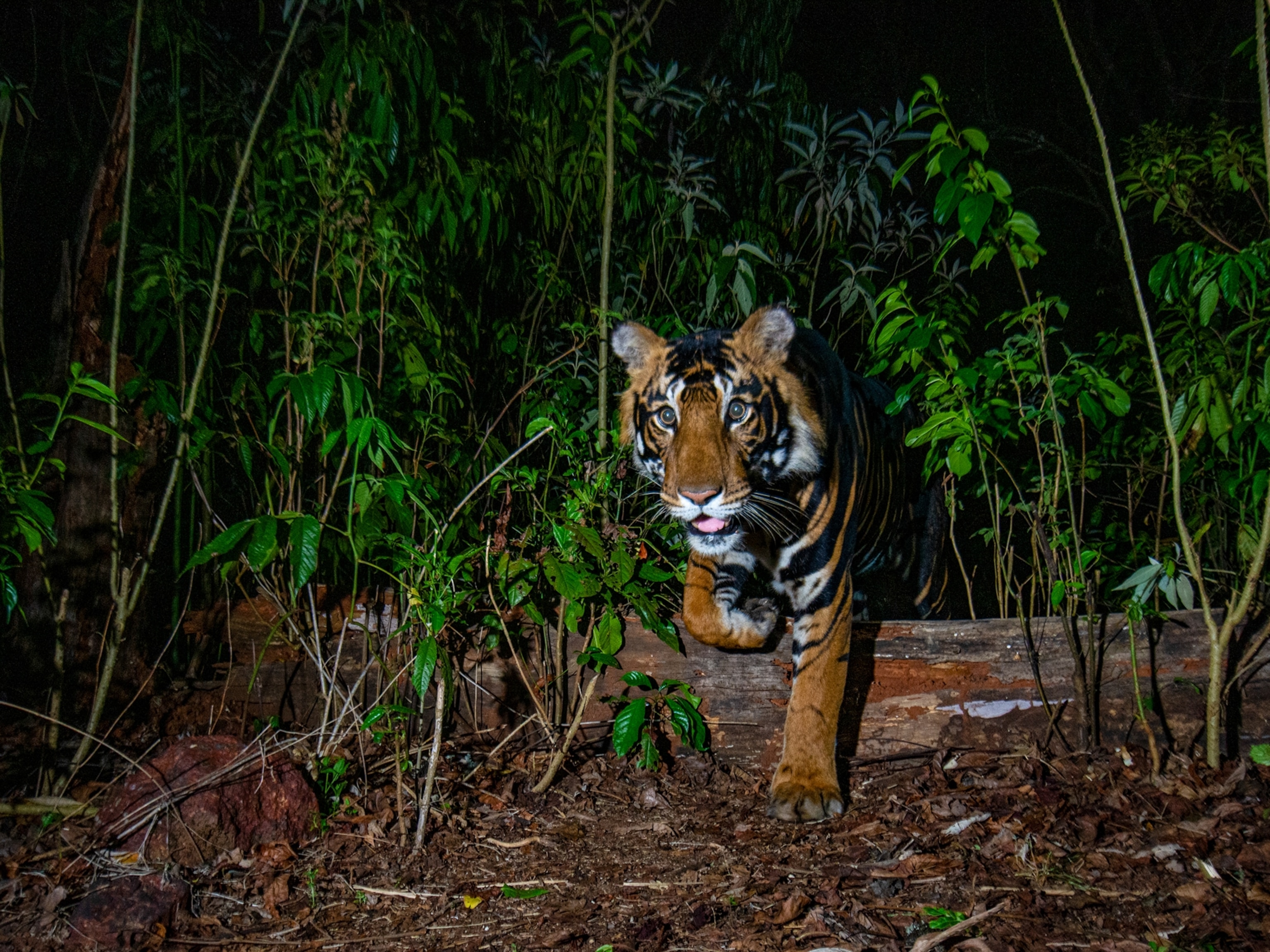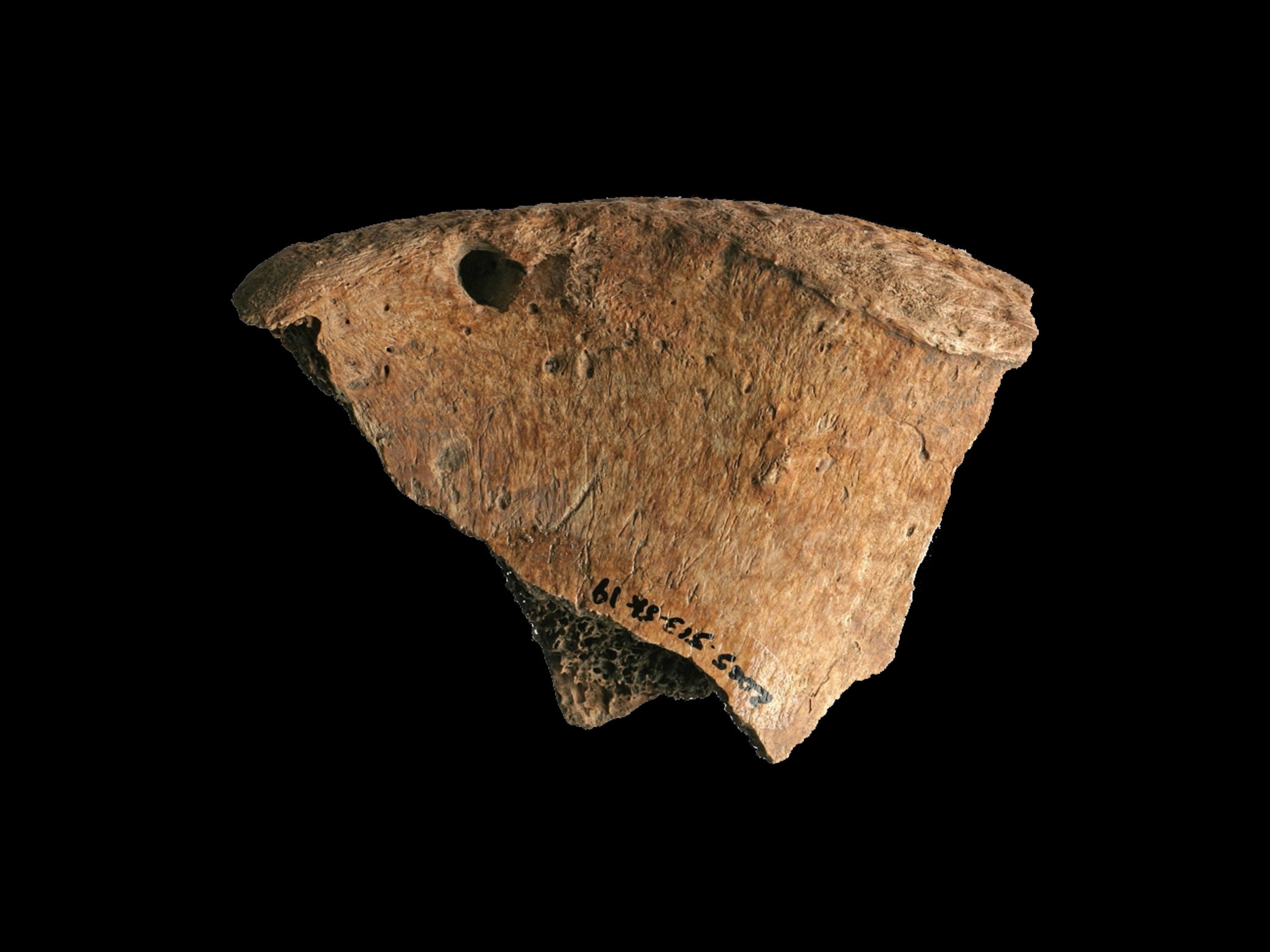
Tiger Genome Sequenced, Shows Big Cats Evolved to Kill
Gene map of endangered Amur tiger seen as aid to preserving big cats in the wild.
The first sequenced tiger genome shows that big cats evolved to kill.
Genes for strong muscle fibers and for meat-eating appear narrowly shared, researchers reported, among species as distinct as the African lion and Asia's snow leopard.
Scientists mapped the genes of the endangered Siberian tiger (or Amur tiger), both to understand the genes that make big cat species distinct from one another and to aid efforts to preserve genetic diversity in wild tiger populations. (Also see "Isolated Tigers Travel Surprising Lands to Find Mates.")
The largest tiger subspecies, Siberian tigers weigh as much as 660 pounds (300 kilograms) and grow to some ten feet (three meters) in length. Only about 450 Siberian tigers exist in the wild, and around 4,000 tigers total are thought to remain in their natural habitats. (See a National Geographic magazine interactive of big cats in danger.)
"We looked at this very large tiger first to see what made it distinctive from other cats," said genome expert Jong Bhak of South Korea's Personal Genomics Institute in Suwon, a co-author of the Nature Communications study reporting the mapping of the Siberian tiger genome.
Bhak and colleagues sampled genes from a nine-year-old male tiger at the Everland Zoo in Korea, and compared them with gene map information from the Bengal tiger, lion, and snow leopard. (See tiger pictures.)
Natural Born Killers
"Genetically all the cats are very close, so we need close genetic mapping to find the small differences that make them distinct," Bhak said.
Some gene differences are apparent in the mapping, such as two genes likely involved in adaptation to high altitudes and thin air in snow leopards and white fur in white African lions.
But overall, the cat family seems to rely on a narrow set of 1,376 genes linked to strong muscle fibers and digestion of protein, the study shows, seen widely across the study species. The genes likely originated in large part with the earliest common ancestor of big felines some 11 million years ago, the study authors suggest.
"I take this to indicate that [big cats] have evolved to fill a very particular carnivorous niche in the environment that is predicated on the advantages in hunting these genes provide," said Bhak.
Domestic cats also have many of these same genes, he said. "All the cats are unparalleled hunters, and here we are seeing some of the genetic reasons."
Saving Tigers
Simply mapping the tiger genome represents a significant advance for researchers, said forensic geneticist Thitika Kitpipit of Thailand's Prince of Songkla University, who led a team that recently completed a map of the maternal genes, or mitochondrial DNA, of tigers.
With more wildlife officials debating the introduction of some big cats to preserves in a bid to diversify wild populations, a gene map is a first step in understanding the genetic landscape of big cats, Bhak said.
Wildlife officials from 13 nations agreed in 2010 at a Tiger Summit in St. Petersburg, Russia, to work toward saving the tiger in the wild amid increasing reports of poaching and declining wild populations in Asia.
Follow Dan Vergano on Twitter.





